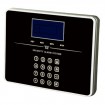Firstly figure out the gas’s density in the air, then mount this detector near the gas source not far than 2.5m. (Note: The density of Coal Gas and Natural Gas is smaller than the air’s, so they are in the higher level. LPG’s density is smaller than the air’s, so it’s in a lower level)
Make sure the power supply and signal wires are connected to the detector correctly turn the power on. Then the device will start as follows:
1. Warm-up status. The red led indicator blinks once and the speaker sounds once.
2. Normal status. The green led indicator blinks once per minute for about 3 minutes.
3. Monitoring status. The green led indicator is on all the time.
To see if the detector is working properly, press the button S1 on the PCB. If the red led lamp is on and the speaker sounds, this means the detector is working properly.
When the density of Gas reaches 6%LEL, the led indicator will be red and blinks, the speaker will beep.(The alarm beeper frequency depends on the gas density, the higher the density is, the higher the frequency is)
When the emergency situation is settled, the detector can be reset to normal working status.
The red led indicator will blink and the speakers’ last sounding if there’s malfunction happening to the detector, the inside delay will give out alarm signals. The detector can be set back to normal status when the malfunction is settled.
Testing and Maintenance
Testing methods: Keep filling gas into the hole for a least 5s when the detector is in monitoring status, if the flash and sound alarm is given out, it means the detector is working properly.(For example, you can use a gas light to do this test).
This product has high requirements for environmental conditions; please keep cleaning the detector timely (like removing the dust, oil, and moisture and so on). The sensitivity greatly depends on the cleanness of the detecting area.













